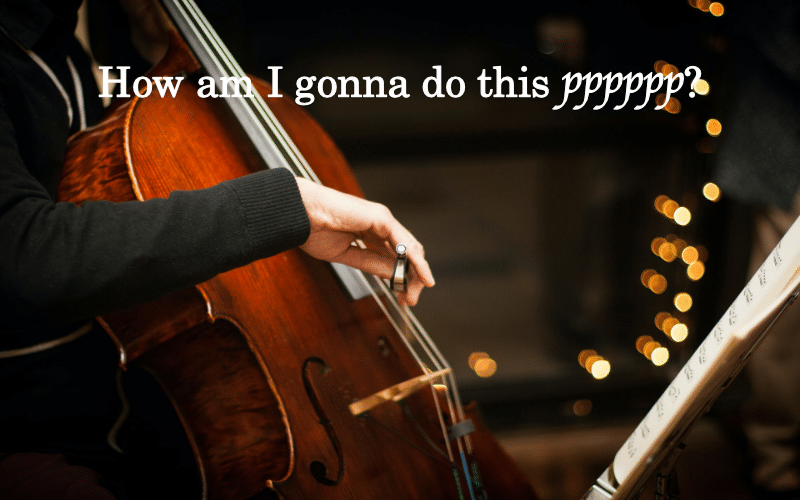p – f – ppp – mp – pf – fff – ffff – fp – pp – mf – ppp…
… and the list goes on…
and on…
REALLY???
Are you really telling me that a pianist could implement all those nonsensical dynamics on a piece of music? And, in our case, a pianist can differentiate between p, pp, ppp, pppp, or ppppppppp, in a single piece? Come on!
Well, to save you from the endless headaches that composers have inflicted on us through the centuries, NO, you cannot play all those dynamics, because, simply, most of them do not exist! Yes, you read it correctly. Most dynamics written laboriously on music scores (especially of the past 40 years) are fakes – Gimmicks, “composers” of today’s use to differentiate themselves from the other “composers” in an effort to distinguish their musics from a sea of similar musics.
What composers of today want
The absolutely vast majority of “serious” composers today, from the ones writing on DAW’s to the ones using digital notators and to a lesser extent the composers who write by hand, care only about one thing and one thing only: To show off their engraving capabilities, and perchance to entertain a bit through their compositional malarkey.
Enough is enough! I’m telling you.
The nonsense has got to stop at some point, dear ladies and sirs. “Lesser” composers, such as Bach(!), were on to something, weren’t they? Guess what! They used no dynamics, or, well, they used them, but laconically. And I do not want to hear any “but the instruments of the day couldn’t handle dynamics” or “but the music often was written incidentally” or “but the musicians themselves knew what to do” and the rest of moaning, and mellow-mooded excuses of the Imperial Grand heirs of today. I do not buy any of that.
It’s simple luck of originality, of Netflix-Era procrastination and self-love, that today’s musical “creators” use those gimmicks and tricks to pump up their musical standings – to the disadvantage of the performer, of course. But performers themselves are equally guilty – most are gullible, inexperienced and, frankly, inferior musical minds, that accept the composers’ caprices because they think that just because something is written down, it must be right and should be performed. Go figure. Pfff. I’ve just realised I’ve had too much coffee today! Sorry.
So.
What are the real dynamics?
Real dynamics are only three: Piano, Forte, and Mezzo Piano. Those are the only dynamics you must learn to play. Softly, loudly and normal.
Dynamics do not move up and down sequentially. There are not just “one plus one equals two” like in mathematics. Dynamics are general guidelines. You should learn to play the “real” dynamics first and then spice up your dynamics repertoire.
So, play forte (f) first, before aspiring to follow a composer’s indication of fffff, okay? As if a dynamic like this is even possible to attempt. What’s the matter with you, pianists? Relax a little! Learn the basics first. And, I haven’t even started on the articulations…
Play piano (p), and when you feel that your p has substance and any discernible body, then try to control an ever softer pp , perhaps.
Do not care yet about playing a “mastermind’s” pppppppppppp . What?
Sweating over the ludicrous offsprings of the 20th and 21st century freakish composers is not fair. Not fair for your own wellbeing, but dare I say, not fair for the future of music creation. The grotesque use of today’s overabundant compositional tools has to stop. The composers should not be geeks. They should write music and stay clear of their shallow, false compositional priorities.
Learn to play the basics first – and then, if your instrument or your fingers permit, go for the extra mile.
Off you go now and play a ffffffffffffffffffffffffffffffffffffffff.
Copyright © 1st of March 2022, by Nikos Kokkinis
===========



Your articles are always educational and fffunny too!!!
Thank you for your wit and knowledge. I always get something good out of your articles.
Anna, thank you very much for your kind words. I’m not sure if I have any concrete knowledge on the piano, but at least I’m trying to entertain a little bit.